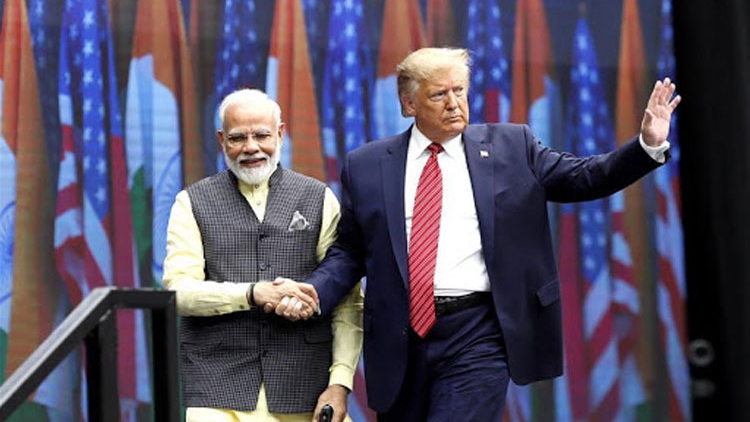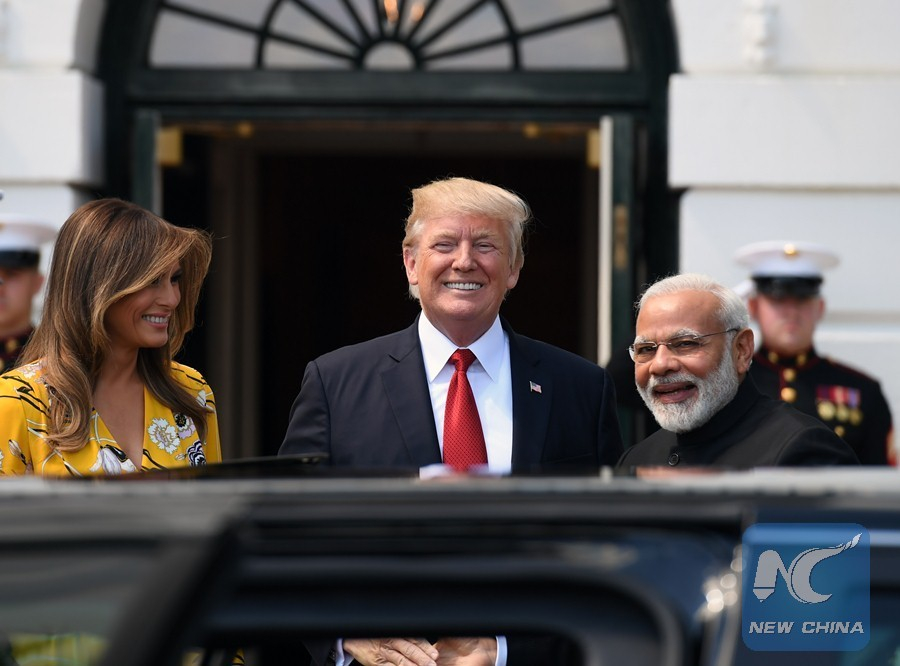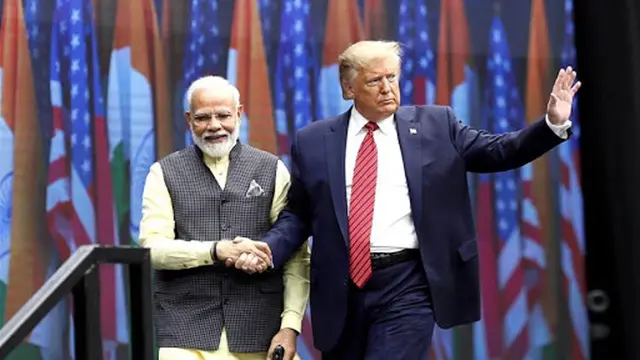
**Editor's note: **Iram Khan is a Pakistan-based commentator on international and commercial affairs. The article reflects the author's opinions, and not necessarily the views of CGTN.
Ever since the first presidential term of George W. Bush, consecutive administrations have tried to woo India into a strategic partnership. But Donald Trump's policies toward India, or other allies for that matter, has been far from consistent. Three years after taking office as the U.S. President and imposing a range of tariffs on India, Trump is this week making his maiden official visit to the South Asian nation.
While there has been personal chemistry between Trump and Indian Prime Minister Narendra Modi, little common ground exists between their trade preferences. The Indian populace largely views Trump positively but his policies do not find widespread support, as the Pew Research Center has surveyed. A comprehensive trade deal under such circumstances is going to be a hard sell.
Trump's visit comes at a time when he is reeling from an embarrassingimpeachment trial. Despite being acquitted, he seems to believe that an array of trade deals can save his 2020 re-election bid.
Starting with the signing of the United States-Mexico-Canada Agreement (USMCA), he revised trade pacts with South Korea and Japan and dashed into signing the phase-one trade deal with China. Though their economic advantages for the U.S. are widely debated, they are nevertheless providing him political mileage.
Recently at a rally in Iowa, he boasted about these deals – and the Democrats' opposition of how he begged them – as if they were a corroboration of his acumen. He went on to warn his supporters that their "farms are going to hell" if he doesn't win.
The next deal he has lined up is with India. This politically incentivized accord is essential in mending his foreign and trade policies, which he has transformed from being institutionalized to personalized.
Another benefit Trump is hoping to earn from the visit is the support of Indian-American voters, most of whom voted for Democrats in the 2016 election, as per research by India Today. It will be a follow-up to an event in Texas last September where he addressed a massive gathering of Indian-Americans while sharing the stage with Modi.
The visit is of political significance for Modi as well who is under pressure over some major issues. First is the economy with a 45-year-high unemployment rate; second is the nationwide protest against a citizenship law deemed in conflict with the constitution's secular tenets, and third is a virtual lockdown of the disputed territory of Kashmir, over which U.S. House Democrats have publicly expressed their apprehensions.

U.S. President Donald Trump (C) and First Lady Melania Trump (L) welcome Indian Prime Minister Narendra Modi at the White House in Washington, DC, the United States, June 26, 2017. /Xinhua
In Modi's hometown state of Gujarat, Ahmedabad is the largest city. Trump is also traveling there to deliver a speech in front of around 100,000 people. An implied political endorsement of Modi will be the main takeaway at the carefully choreographed event. Moreover, there will be drum beating over some form ofa trade deal that the two leaders may strike during their discussions in New Delhi.
U.S.-India trade relations have remained rough since Trump levied tariffs on Indian steel and aluminum three years ago. India fired back with restrictions on U.S. agricultural goods and medical devices. The spat soon spiraled out of control when the U.S. revoked India's decades-old special trade status, affecting its 5.6 billion U.S. dollars duty-free exports and prompting India to further retaliate with tariffs on American items.
And if that was not enough, Trump stripped India of its "developing country" designation in the World Trade Organization days before his visit. This penalization translates into a reduction in subsidies and will cost almost 260 million U.S. dollars to the Indian economy. Any chances of restoring India's special trade status have also faded with this move.
After shuttling for 18 months between Washington and New Delhi, trade officials of both countries are still unable to guarantee a far-reaching agreement. India pulled out of the China-backed Regional Comprehensive Economic Partnership (RCEP) last November and is seeking to clinch something with the U.S. Despite that, Indian Foreign Ministry has stated the government will not "rush into" a deal if a balanced outcome cannot be agreed upon.
India appears to have agreed on tariff concessions for some agricultural items and Harley Davidson motorcycles. It is pertinent to note here that the demand for these motorcycles remains low in India. But manufactured in Wisconsin and Pennsylvania, they have an electoral implication back at home.
The American side has already indicated that only a modest deal should be expected. Not playing all his cards, Trump says he is "saving the big deal for later on," which practically means after the 2020 presidential election. These messages suggest that a tiny trade deal will be signed with heavy fanfare.
The only significant announcements during the visit will be a couple of nuclear and defense contracts. India is purchasing 24 MH-60 Seahawk and an additional 6 AH-64E Apache helicopters. Separately, the American nuclear reactor designer Westinghouse Electric Company that filed for bankruptcy in 2017 is expected to sign an agreement to provide six reactors to India.
As can be seen, President Trump's visit to India is taking place when both leaders are facing mounting domestic pressures. With limited economic impact, the visit will at maximum serve to further their political paths. Enhancing bilateral trade, however, can wait for some other time.
(If you want to contribute and have specific expertise, please contact us at [email protected].)
 简体中文
简体中文

